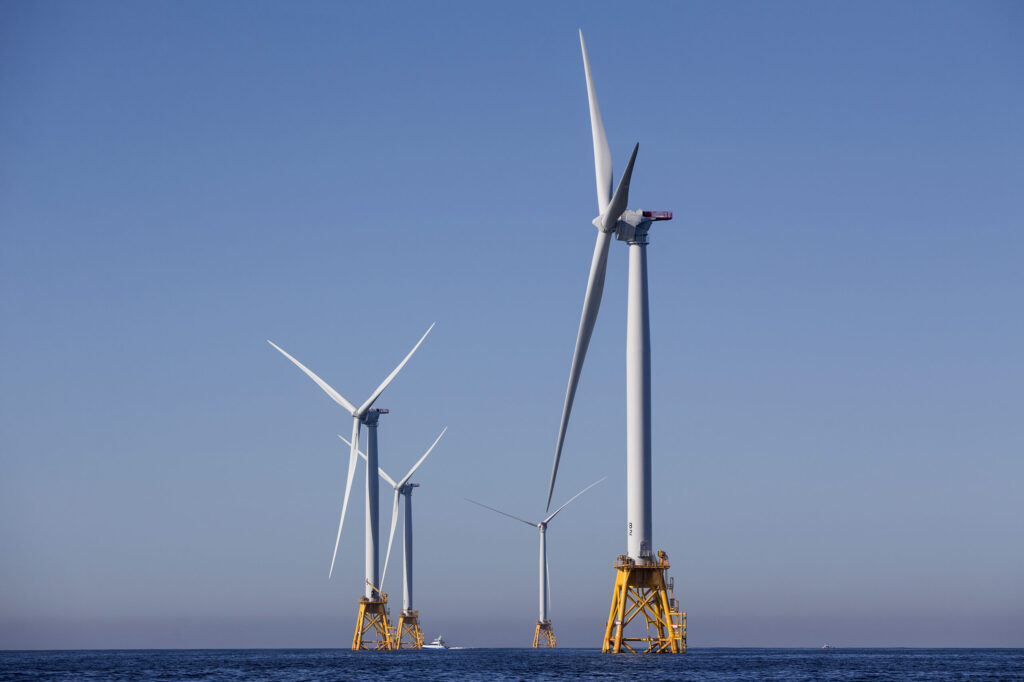The GE-Alstom Block Island Wind Farm off of New Shoreham, Rhode Island, which became operational in December 2016, was the first commercial offshore wind farm in U.S. waters. New coastal wind projects are facing supply chain issues. (Scott Eisen/Getty Images)
The federal government will auction offshore wind lease space in the Gulf of Maine at the end of October.
Set to take place on Oct. 29, the auction will include eight lease areas off the coast of Maine, Massachusetts and New Hampshire, according to a news release from the Department of the Interior’s Bureau of Ocean Energy Management. If those sites are all fully developed, they will have the potential for 13 gigawatts of offshore wind energy — enough to power more than 4.5 million homes.
“This final sale notice is a massive milestone for realizing the enormous potential to deliver vast amounts of affordable, reliable, home-grown clean energy to Maine and the rest of New England,” said Jack Shapiro, climate and clean energy director for the Natural Resources Council of Maine. “This is our opportunity to create a new clean energy industry for Maine that builds on our proud maritime and shipbuilding legacy with thousands of new jobs, lower pollution, and stronger communities.”
The area included in the auction is about 120,000 acres less than what BOEM outlined in its Proposed Sale Notice earlier this year. The release said BOEM prioritized avoiding offshore fishing grounds, sensitive habitats and vessel transit routes.
Final lease areas for offshore wind in the Gulf of Maine. (Credit: Bureau of Ocean Energy Management)
BOEM used feedback gathered over two years from local tribes, fishing interests and other invested parties to determine the final location, size and shape of the eight lease areas.
BOEM will release more details Tuesday including lease conditions, criteria for evaluating competing bids and the procedure for awarding leases, the release said. Those details will outline the lease stipulations that are designed to promote good-paying union jobs and flexibility in transmission planning, as well as minimize impacts to habitats and collect data on protected marine mammals.
However, the issuance of a lease during the sale does not authorize any construction or operation of an offshore wind facility. Rather, the lease provides the right to submit project plans that would then be subject to review before approval.
“Today’s announcement – which builds on the execution of the nation’s first floating offshore wind energy research lease in Maine last month – is the result of years of thoughtful coordination between our team, the Gulf of Maine states, industry and the Tribes and ocean users who share our interest in the health and longevity of our ocean,” said U.S. Secretary of Interior Deb Haaland.
As for that research array, the state’s Offshore Wind Research Consortium has identified several research priority areas, which include environmental questions such as which bird and bat species may be at risk from floating wind turbines.
Stephanie Watson, offshore wind program manager for the state, told Maine Morning Star that she hopes the information learned from the research array can help inform the commercial-scale projects to come.
SUPPORT NEWS YOU TRUST.

